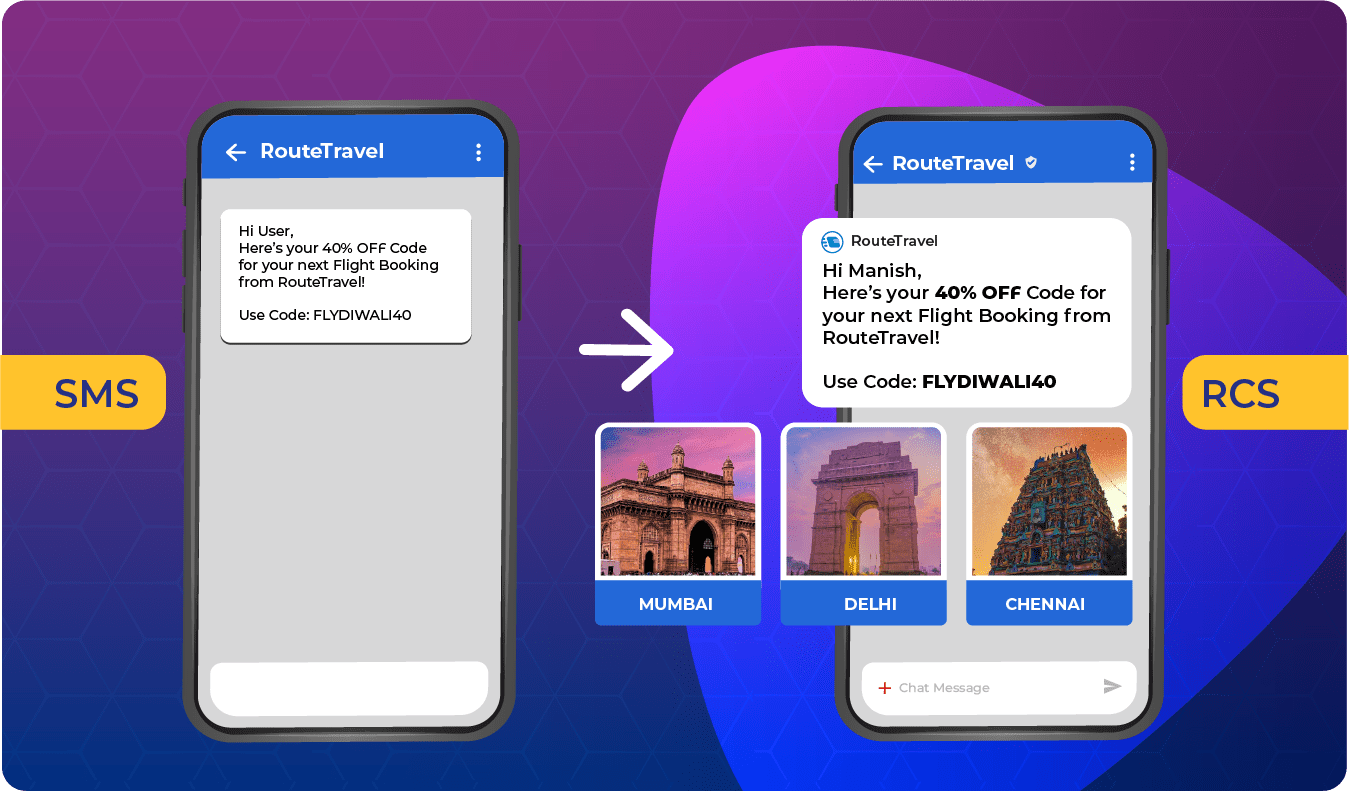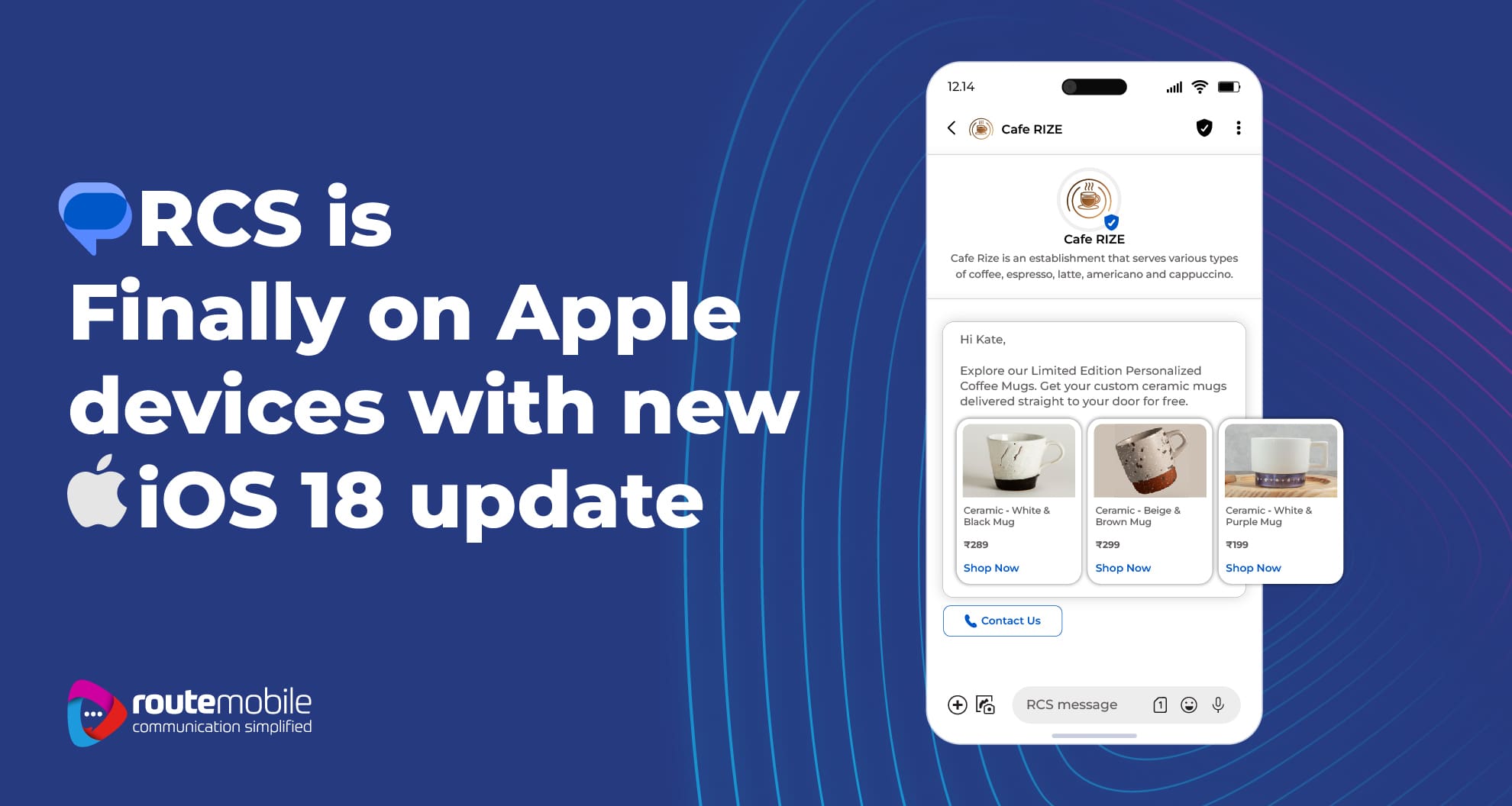Considering that 16 million SMS messages are sent worldwide every minute, a staggering 60% of consumers read these messages within the first 5 minutes of receiving them. While SMS has been a fundamental part of mobile messaging for decades, it is limited in its capabilities, especially when compared to the rich and interactive features that RCS offers. The market size of RCS is expected to experience robust growth, increasing from USD 5.2 billion in 2020 to reach USD 11.7 billion by 2025, with a compound annual growth rate (CAGR) of 17.6% over this five-year period. In this article, we will explore how RCS is set to replace SMS as the dominant text-message system and revolutionize the way we communicate.
SMS has served as the de facto standard for text messaging since the early days of mobile phones. However, it comes with several limitations that have become increasingly apparent in today’s fast-paced digital world. These limitations include:
- Lack of Multimedia: SMS is limited to sending plain text messages, making it inadequate for sharing multimedia content such as photos, videos, and audio clips.
- Limited Character Count: SMS messages are typically limited to 160 characters, forcing users to split longer messages into multiple parts, which can be cumbersome and confusing.
- No Read Receipts or Typing Indicators: SMS lacks features like read receipts and typing indicators, leaving users in the dark about the status of their messages.
- Limited Group Messaging: While group messaging is possible with SMS, it lacks the advanced features and functionality that RCS offers.
- No Encryption by Default: SMS messages are not end-to-end encrypted by default, making them vulnerable to interception and privacy concerns.
SMS remains a potent communication channel extensively utilized by brands due to its broad reach and compatibility with various devices. However, SMS does have inherent limitations, which RCS effectively addresses through its extensive feature set. Given these capabilities, it’s evident why an increasing number of brands are migrating from SMS to RCS for messages that can take advantage of these supplementary features. This transition is backed by Mobilesquared data, indicating a significant increase in unique RCS users, reaching 1.7 billion in June 2022, marking a year-on-year growth of 55.9%. Meanwhile, SMS-only users have declined by 5% from June 2021 to June 2022.
Here’s how RCS is poised to replace SMS:
- Rich Multimedia Messaging: RCS allows users to send multimedia content, such as high-resolution photos and videos, making conversations more engaging and expressive.
- Extended Character Limits: Unlike SMS, RCS does not have a strict character limit, allowing users to send longer messages without the need to split them into multiple parts.
- Read Receipts and Typing Indicators: With RCS, you can see when your message has been delivered, read, and even when the other person is typing a response, providing a more dynamic and interactive communication experience.
- Group Messaging Enhancements: RCS offers advanced group messaging features, including the ability to name groups, add or remove participants, and see who has read messages in the group chat.
- Enhanced Security: RCS supports end-to-end encryption, ensuring that your messages are secure and private, addressing the privacy concerns associated with SMS.
 Integration with Mobile Operating Systems
Integration with Mobile Operating Systems
One of the key factors that will drive the adoption of RCS is its integration with mobile operating systems. Major smartphone manufacturers and operating system providers have been actively working to incorporate RCS into their platforms. As a result, users will have native support for RCS without the need for third-party apps or services.
Google, in particular, has been a driving force behind RCS adoption. The Android Messages app, which supports RCS, is pre-installed on many Android devices, making it accessible to a vast user base. Apple has also taken steps to support RCS-like features in its iMessage platform, further pushing the adoption of rich messaging.
 Interoperability and Widespread Adoption
Interoperability and Widespread Adoption
For RCS to replace SMS as the dominant text-message system, interoperability is crucial. Fortunately, industry leaders and mobile carriers have recognized the importance of interoperability, and efforts are underway to create a unified RCS ecosystem. When RCS messaging is universally compatible across different carriers and platforms, it will eliminate the fragmentation that has hindered the adoption of other messaging apps in the past.
As RCS becomes more widely adopted and supported by mobile carriers worldwide, users will benefit from a seamless messaging experience, regardless of their choice of device or carrier.
Route Mobile’s RCS Solutions
As users experience the benefits of RCS, they will naturally gravitate towards this new standard for text messaging, ultimately making SMS a thing of the past. The era of rich and interactive messaging is upon us, and RCS is leading the way towards a more dynamic and engaging communication future.
Route Mobile is empowering brands to achieve self-sufficiency by enabling them to craft their own templates, consequently diminishing their dependency on external sources. Various types of templates include Rich Text, Carousel and Text. We also provide brands with the ability to retrieve template reports based on their usage.
Get in touch with us, and let’s collaborate on integrating RCS into your communication strategy, effectively driving tangible business outcomes.




 Integration with Mobile Operating Systems
Integration with Mobile Operating Systems Interoperability and Widespread Adoption
Interoperability and Widespread Adoption








